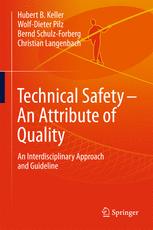

Most ebook files are in PDF format, so you can easily read them using various software such as Foxit Reader or directly on the Google Chrome browser.
Some ebook files are released by publishers in other formats such as .awz, .mobi, .epub, .fb2, etc. You may need to install specific software to read these formats on mobile/PC, such as Calibre.
Please read the tutorial at this link: https://ebookbell.com/faq
We offer FREE conversion to the popular formats you request; however, this may take some time. Therefore, right after payment, please email us, and we will try to provide the service as quickly as possible.
For some exceptional file formats or broken links (if any), please refrain from opening any disputes. Instead, email us first, and we will try to assist within a maximum of 6 hours.
EbookBell Team

0.0
0 reviewsThis book focuses on technical safety, means of expanding the current procedures, and making the related risks more predictable. It identifies the ‘hidden commonalities’ of the various technical safety concepts and formulates a corresponding procedure, applicable across disciplines, in a single guideline.
The future is now: we constantly face change through science, research and technologies, change through industrial development, and new innovations and complexities. Our society fundamentally depends on technical systems, infrastructures and interconnected smart components, in every corner of the human environment. And these systems bring with them the need for technical safety. The risks of extending what is technically feasible have to be identified and analyzed at an early stage so as to avoid and/or mitigate potential harm by means of appropriate countermeasures.
Every technical field interprets technical safety in its own way. However, if a safety concept is to be comprehensively applied, it must be compatible with all technical fields – a challenge this book successfully addresses.